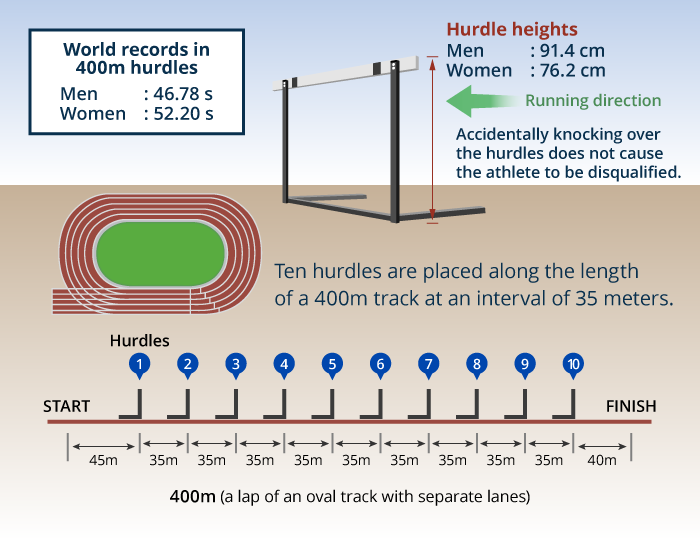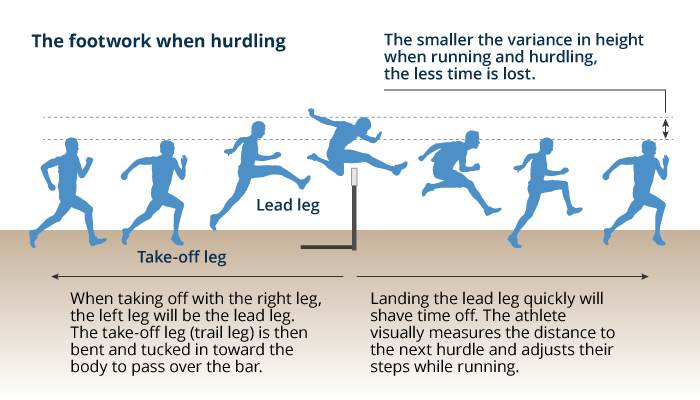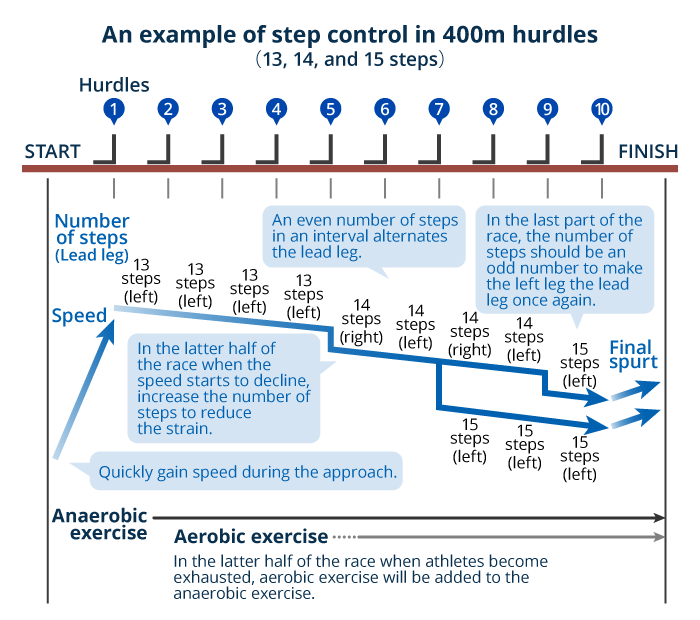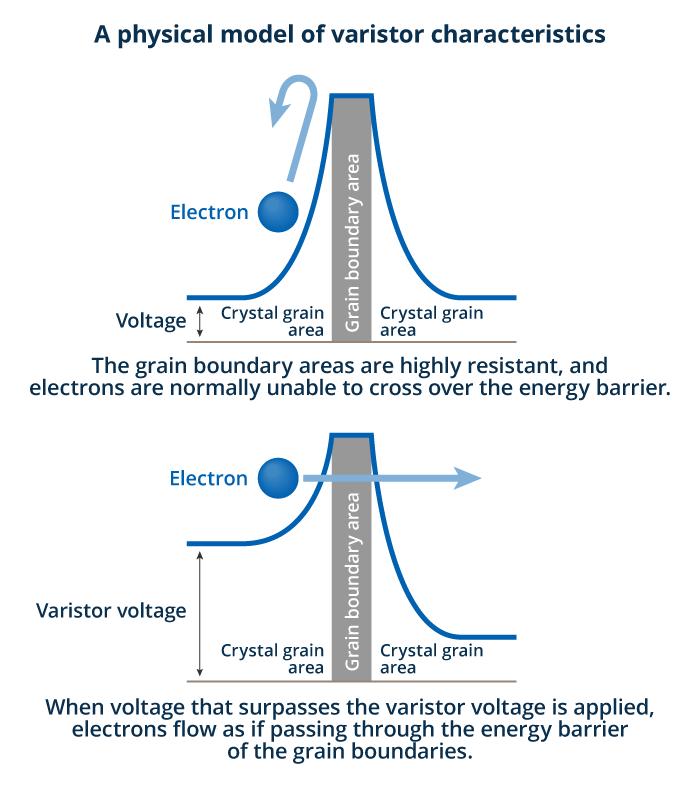World Athletics@TDK
[No.2 The 400m Hurdles]A demanding track and field event that requires physical strength and skill

Although only a short distance, it combines aerobic exercise with anaerobic exercise
The 400m hurdles is considered to be the most demanding of all track events. In addition to the 400m sprint, which in itself demands full muscular activity, the physical strength and skill to jump over 10 hurdles is also required.
The world record for the 400m hurdles lags behind that of the 400m sprint by more than 3 seconds, which of course is due to the time needed to jump over the hurdles, the average loss being about 0.3 seconds per hurdle.
Hurdling requires passing over bars with a quick motion of the legs, rather than leaping bodily as in the high jump. This requires flexibility of the body, especially in the hip joints. There are two types of muscle movement, anaerobic exercise which is responsible for instantaneous force, and aerobic exercise for endurance. In short distance events such as the 110m (men) and 100m (women) hurdles, athletes dash for the finish line by only involving anaerobic exercise, whereas the 400m hurdles, which overwork muscles to the utmost limit for more than 40 seconds, involve aerobic exercise in addition to the anaerobic exercise.
Athletes tend to feel as if the hurdles in the latter half of the race are increasingly higher. This is because lactic acid builds up in the thigh muscles as the athletes jump over the hurdles, making it harder for them to lift up their legs. For this reason, the gradual reduction of speed in the latter part of the race is unavoidable, even for top athletes. The 400m hurdles necessitates athletes have a strategic approach to their physical and muscle strength.

Controlling the number of steps between hurdles is also a must in a race
The 400m hurdles is like a car race, in which racers compete against one another with limited fuel. Too much revving of an engine results in running out of fuel, while energy-saving driving will not improve the speed. In the same way, economical and efficient running and hurdling based on sports science is a requisite in this event.
An athlete takes off on one leg, and the other leg is thrown forward to pass over the bar. The roles of both legs depend on the number of steps between the hurdles. In general, the left leg is often the lead leg. As the race takes place on an oval track in an anticlockwise direction, the runner’s body leans toward the left hand side when passing through the curves. For this reason, it is more advantageous to take off with the right leg and lead with the left leg.

In the 400m hurdles, controlling the number of steps is an important technique to shaving time off. In order to ensure the left leg is the lead leg, it is necessary to take an odd number of steps between hurdles. In the men’s race for example, top athletes usually run the 35m interval between hurdles with 13 steps, but in the latter part of the race, when the muscles start to get fatigued and it becomes difficult to maintain 13 steps, they switch to a 14-step interval. With an even number of steps, the right leg will be the lead leg, but when 14 steps are taken two or four times, the left leg again becomes the lead leg. Therefore, in the last part they switch to a 15-step interval in the race to the finish line. At which hurdle the athlete changes the number of steps, with pacing and speed in mind, is another point to note when watching a race. Keep your eyes on the lead leg.

Lowering the hurdle for circuit protection with abnormal voltage
Electrostatic discharge sometimes occur when we touch metal objects such as a door knob. This discharge is quite problematic for mobile devices like smartphones, tablets, and digital cameras, which we frequently handle with our hands. Instantaneous extremely high voltage surge current flows when static electricity is discharged, and if the static electricity accumulated inside a human body is discharged through earphones, microphones, or USB terminals, the surge current penetrates the circuit and may cause device malfunction or failure.
A varistor is an electronic component that redirects the surge current caused by electrostatic discharge to the ground and protects the circuit. Varistor materials are polycrystalline substances where fine crystal grains used in semiconductive ceramics, mainly composed of zinc oxide, aggregate. The characteristics of a varistor and the behavior of a grain boundary, which is the boundary between crystal grains, are deeply related. For electrons trying to move, the grain boundary’s high resistance value is like a high hurdle and so usually does not carry any current. However, when a current surpasses a certain voltage (varistor voltage), the current is carried through it by suddenly lowering the resistance value, as if the hurdle has disappeared.
Varistors are frequently used as an electrostatic countermeasure component for high-powered mobile devices including smartphones.


<A Multilayer Chip Varistor>
A chip component, which is composed of alternately laminated varistor material used in internal electrodes and semiconductive ceramics. TDK’s multilayer chip varistor is frequently used in mobile devices etc. to protect circuits from electrostatic discharge.
Deciplines
https://www.iaaf.org/disciplines/hurdles/400-metres-hurdles
TDK is a comprehensive electronic components manufacturer leading the world in magnetic technology






